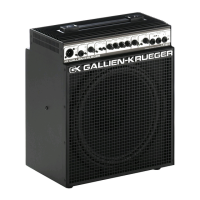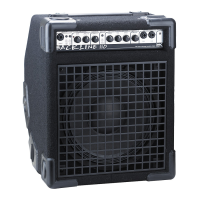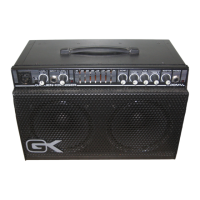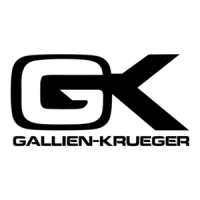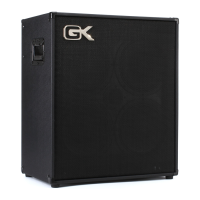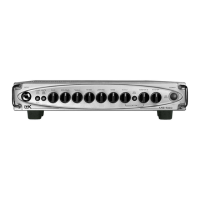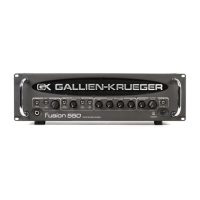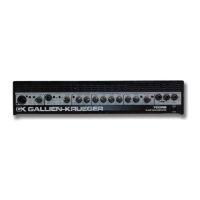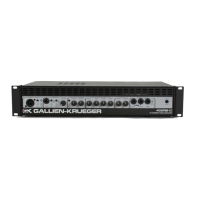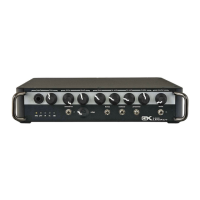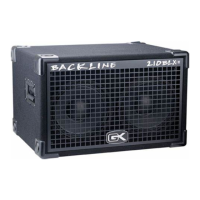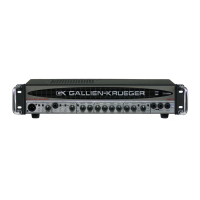
Do you have a question about the Gallien-Krueger 1001RB-II and is the answer not in the manual?
| Brand | Gallien-Krueger |
|---|---|
| Model | 1001RB-II |
| Category | Amplifier |
| Language | English |
Founder Robert Gallien's perspective on product design and company ethos.
Ensure correct AC power specifications for safe operation and to prevent damage.
Verify circuit capacity to handle high power output and avoid hazards.
Guidelines for handling power cords, avoiding extension cords, and not opening the enclosure.
Steps for plugging in the amplifier, connecting speakers, and plugging in the bass.
Recommended initial settings for EQ, Boost, Level, and Master Volume.
Connecting for Bi-Amp mode using RBH cabinets and 4-conductor Speakon cable.
Connecting for Normal operation using standard cables; tweeter amp is inactive.
Advice on using the EQ and Contour controls for fine-tuning tone.
Understanding the String Bass button and Boost/Master for tone shaping.
Details on the balanced direct out, its controls, and pre/post EQ options.
Recommended control settings for various musical styles.
Proper placement, ventilation, and rack mounting for optimal operation.
Instructions for cleaning the unit and recommendations for ongoing care.
Controls for input signal level, gain, and overall volume management.
Includes EQ bands, Voicing Filters (Contour, Presence, String Bass), and Boost.
Details direct output, effects loop, tuning mute, and tuner output for signal routing.
Controls for tweeter/woofer volume and hi-cut filters for speaker management.
The connection point for the detachable AC power cord.
Output for full-range operation, specifying load limits and impedances.
Outputs for Bi-Amp operation, enabling connection to RBH Series cabinets.
Details the speaker setups for 115 and 210 combo models.
Maximum recommended loads for combos with and without internal speakers.
Instructions for engaging and disengaging the transport system.
Overview of key features like power supply, Bi-Amp design, EQ, and cooling.
Explanation of high current capacity and its effect on sound control.
Benefits of Bi-Amp technology and how the electronic crossover works.
Details on the specialized Bass-specific EQ circuits and their flexibility.
Explanation of Voicing Filters, Contour, String Bass, and low noise input stage.
Description of G.I.V.E. technology and the temperature-sensitive fan cooling.
Overview of the amplifier's protection circuits against faults and unsafe conditions.
Information on Speakon cables for Bi-Amp and concluding remarks.
Technical specifications for output power ratings and cooling systems.
Specifications for input impedance, levels, and equalizer frequency responses.
Physical dimensions, weight, and power consumption details for different regions.
